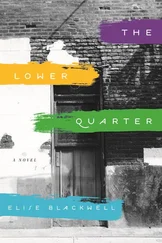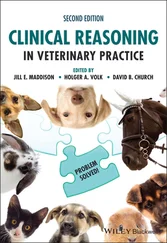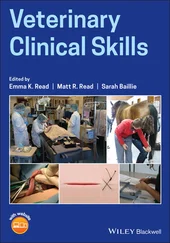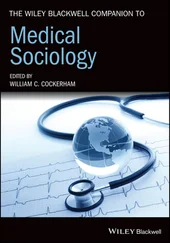Because of medicolegal considerations, handle all samples under chain‐of‐custody procedures. These records specifically identify each specimen, document their condition and container in which they are packaged, time and date of both transfer and receipt of samples, and all individuals involved in their handling, transfer, or receipt.
Testing can be targeted or non‐targeted depending on whether there are known exposures or unknown exposures. Mass spectrometry is a powerful technique for broad‐based targeted testing. However, there is no one or two analytical procedures that can rule out all possible chemical exposures.
Conduct a complete and thorough postmortem examination.
Consider transporting the animal to a veterinary diagnostic facility as soon as possible. If this is not an option, conduct a thorough field postmortem examination, and record any actual or suspected abnormalities.
If an animal cannot be taken to a veterinary diagnostic facility, consultation with a veterinary pathologist or toxicologist might be warranted to ensure collection and appropriate preservation of useful samples in sufficient quantities.
Carefully examine stomach and GI tract contents for evidence of toxic plant fragments or unexpected grain or forage ingestion.
Collect formalin‐fixed samples from all major organ systems and any gross lesions, and submit these samples to a veterinary pathologist for histopathologic examination.
 THERAPEUTICS
THERAPEUTICS
In many situations, treatment is not possible; however, if the animal is alive, direct treatment toward stabilization of vital organ systems – establish and maintain an open airway, control seizures, correct life‐threatening cardiac dysrhythmias, and begin fluid administration.
Once the animal is stabilized, initiate oral and dermal decontamination.
AC (1–4 g/kg PO in water slurry [1 g of AC in 5 mL of water]).
One dose of cathartic PO with AC if no diarrhea or ileus – 70% sorbitol (3 mL/kg) or sodium or magnesium sulfate (250–500 mg/kg).
Administration of other drugs depending on the individual situation.
Appropriate monitoring and follow‐up depend on the specific toxicant under suspicion or analytically confirmed.
Antidotes are not available for most toxicants, but fortunately, many animals survive with timely decontamination and appropriate symptomatic and supportive care.
If an antidote is available, consider giving it first before further treatment.
 COMMENTS
COMMENTS
Prevention/Avoidance
Routinely inspect the immediate environment of an animal and note any unusual human activity.
Routinely inspect feed and water for any foreign material.
Encourage clients to know sources of feeds and forages.
To minimize malicious poisoning opportunities, camera surveillance can be considered, particularly for valuable animals.
Potential complications depend on the specific toxicant involved.
Expected Course and Prognosis
Variable depending on the chemical.
Necropsy Analysis
Other specific toxicant topics
See Appendix 1 for a complete list.
1 Haliburton JC, Edwards WC. Medicolegal investigation of the sudden or unexpected equine death: toxicologic implications. In: Robinson, NE, ed. Current Therapy in Equine Medicine 4. Philadelphia: WB Saunders, 1997; pp. 657–659.
2 Johnson BJ. Handling forensic necropsy cases. Vet Clin N Am: Equine Practice 2001; 17(3):411–418.
3 Poppenga RH. Toxicology. In: Southwood LL, Wilkins PA, eds. Equine Emergency and Critical Care. Boca Raton: CRC Press, 2015.
Author:Robert H. Poppenga DVM, PhD, DABVT
Consulting Editor:Robert H. Poppenga DVM, PhD, DABVT
Chapter 2 Necropsy Analysis
 DEFINITION/OVERVIEW
DEFINITION/OVERVIEW
The key components of a diagnostic toxicology work‐up include history, clinical signs, clinical chemistry, analytical toxicology, and, if animals die, a postmortem examination (necropsy).
The first goal of a postmortem examination is to determine the cause of death, circumstances surrounding the death, and/or the extent of disease.
Systematic gross and microscopic inspections of all organ systems after death are indispensable diagnostic tools that can help the clinician gain clues about what the physical findings likely represent and are important should litigation become an issue.
The second goal is to collect appropriate specimens for analytical toxicology testing. Samples typically collected for toxicology testing include stomach contents, liver, kidney, fat and brain.
 ETIOLOGY/PATHOPHYSIOLOGY
ETIOLOGY/PATHOPHYSIOLOGY
See individual topic discussions on absorption, distribution, metabolism, and excretion (ADME), mechanisms of action, systems affected and diagnostic approaches for individual toxicants.
 SIGNALMENT/HISTORY
SIGNALMENT/HISTORY
History and clinical signs should be kept in perspective for determining differential diagnoses while completing the necropsy.
Poisonings often affect many animals in a very short period of time and thus attract substantial public attention and interest.
Many clues can increase the suspicion of a toxic etiology. Obvious cases involve sudden onset of disease in a number of animals. Common feed or environmental conditions will further support a suspicion of an intoxication. Intoxication is also suggested in the otherwise healthy animal that is found “suddenly dead”.
However, chronic and subchronic intoxications also occur and are more challenging to diagnose because they are subtle. Sporadic mortality in a group of animals along with poor animal condition should raise suspicion of a chronic intoxication.
Other situations suggesting testing from a toxicology laboratory include drug testing in the racehorse industry, testing for nutritional adequacy (especially selenium and vitamin E status), or providing testing in suspect cases of malicious poisoning.
Reasons to suspect a poisoning:Many animals are sick with no known exposure to infectious disease.Affected individuals have been exposed recently to a new environment.There has been a recent change in feed.Recent construction activity in the environment.Recent pesticide application in the environment.Unusual weather conditions.The animal has limited feed or pasture, resulting in consumption of plants not normally consumed.An uncommon clinical condition exists.There has been a potential threat of malicious poisoning.Unexplained death(s) has/have occurred.Persistent poor health condition.
 CLINICAL FEATURES
CLINICAL FEATURES
Toxicants typically target specific organs or systems (e.g. the cardiovascular, the nervous or the urogenital systems). However, multiple organs can be affected.
Читать дальше
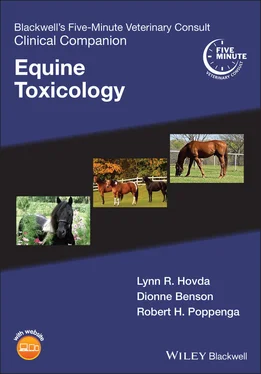
 THERAPEUTICS
THERAPEUTICS COMMENTS
COMMENTS DEFINITION/OVERVIEW
DEFINITION/OVERVIEW ETIOLOGY/PATHOPHYSIOLOGY
ETIOLOGY/PATHOPHYSIOLOGY SIGNALMENT/HISTORY
SIGNALMENT/HISTORY CLINICAL FEATURES
CLINICAL FEATURES